If you want to bring beautiful colors to your garden which will delight your local pollinators, you can try planting sweet peas.
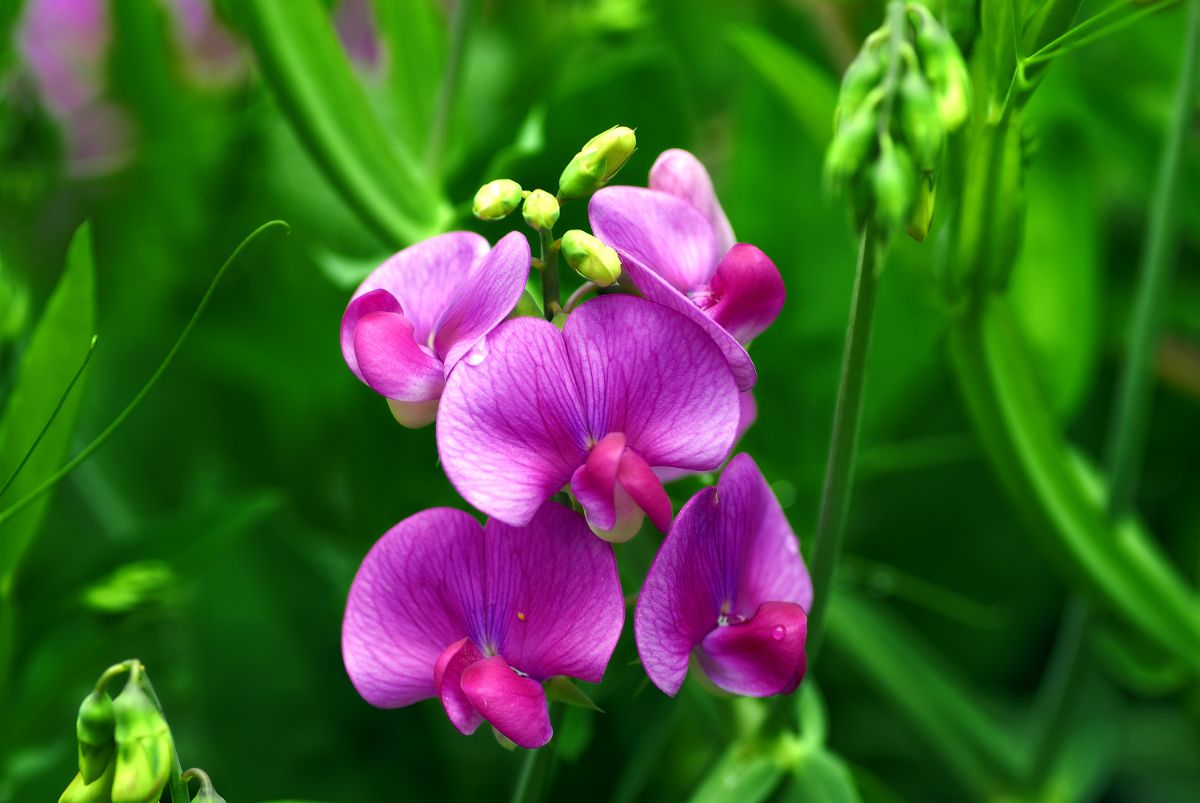
This guide will teach you how to grow sweet peas successfully, even if you are a novice gardener. Check the advanced jump below if you want to jump straight to a particular section. Otherwise, read on for the full guide.
Jump to:
- What Are Sweet Peas?
- Are Sweet Peas Annuals or Perennials?
- Are Sweet Peas Fragrant?
- Sweet Pea Basics
- Where Do Sweet Peas Grow?
- Why Grow Sweet Peas?
- When Do Sweet Peas Bloom?
- How Long Do Sweet Peas Bloom?
- When to Plant Sweet Peas
- Ideal Growing Conditions for Sweet Peas
- How to Plant Sweet Peas
- How to Propagate Sweet Peas
- How to Care for Sweet Peas
- Recommended Planting Combinations for Sweet Pea
- Sweet Pea Landscaping Ideas
- Recommended Sweet Pea Varieties
- Frequently Asked Questions About Growing Sweet Peas
- Where to Buy Sweet Peas
What Are Sweet Peas?
“Sweet pea” is a colloquial name referring to certain species of flowers in the genus Lathyrus.
Other species in this genus have other colloquial “pea” names, like yellow pea, red fodder pea, golden pea, drypark pea, twoflower pea, Bullfrog mountain pea, and so forth. A number of them are also referred to as “vetchlings,” for example, the prairie vetchling, the Spanish vetchling, the grass vetchling and etc.
The two species of Lathyrus that are referred to as sweet peas specifically are:
• Lathyrus odoratus
• Lathyrus latifolius
Both of these species of sweet peas are climbing plants.
Do not confuse the sweet peas we are talking about with the vegetable sweet peas. We are focused on the flowers, not on sugar snap peas or snow peas (see the FAQ for more information).
Are Sweet Peas Annuals or Perennials?
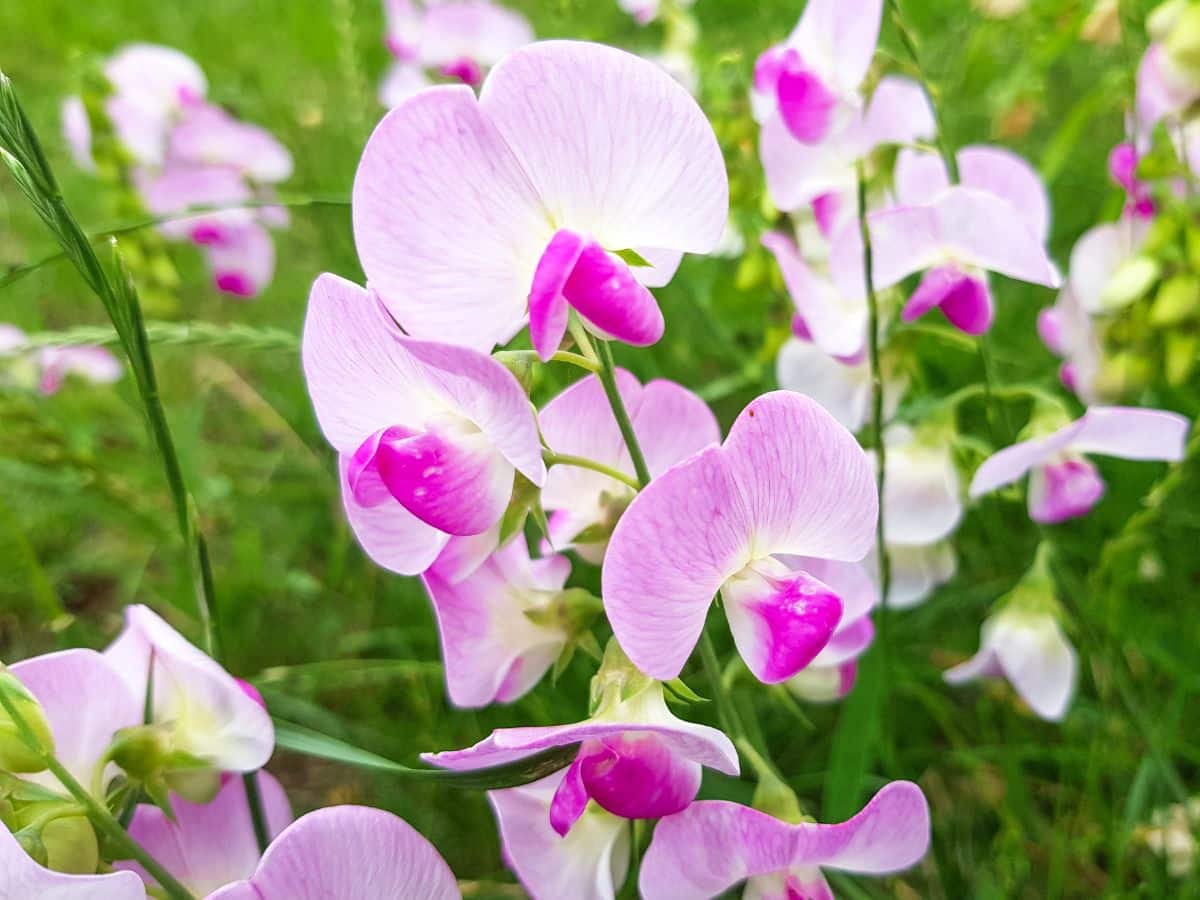
You may sometimes see people say that sweet peas are annuals and other times that they are perennials. Which is correct? Both, as it turns out.
Lathyrus odoratus are annuals. In fact, unlike most plants marketed as “annuals,” Lathyrus odoratus sweet peas are true annuals. The Royal Horticultural Society (RHS) says, “Sweet peas (Lathyrus odoratus) only live for a year, dying after setting seed. But don’t let this put you off as they are super easy to grow from seed.”
The majority of plants that are called “annuals” are actually tender perennials—meaning they come back year after year in warmer climate zones. But we see no indication that this is ever true of this type of sweet pea.
The other species of sweet pea, Lathyrus latifolius, on the other hand, is actually a perennial. For this reason, it is called the “everlasting pea.” Other names for it include the “broad-leaved everlasting pea,” the “perennial pea,” or the “perennial peavine.” It can even be called the “perennial sweet pea.”
That said, not everybody even refers to the everlasting pea as a “sweet” pea at all. But enough people do that we feel it is suitable to discuss both the annual sweet pea and the perennial everlasting pea in this guide.
Our focus is mostly going to be on the perennial sweet pea, as perennial blooms are what we generally post about on our site.
That said, you will discover that a lot of the advice that applies to growing perennial sweet peas also applies to growing annual sweet peas. Once you have learned how to grow one successfully, it should be a pretty easy matter to start growing the other as well.
Are Sweet Peas Fragrant?
Given the name “sweet pea,” you probably figure that these flowers have a sweet scent. But do they? It depends on the type of sweet pea you get.
If you are going for an annual variety of sweet pea, then yes, it will have a scent. It may be mild or strong, depending on the cultivar you choose. A lot of people compare the fragrance of sweet pea to jasmine, but you may also catch other floral or fruity notes. The sweetness in the smell may be compared to honey.
But if you are planting a perennial sweet pea, it may surprise you to learn that the flowers will not exude a fragrance.
Whether you consider that good or bad news comes down to what you are looking for. While many people enjoy the scent of flowers wafting across their garden, others may find strong fragrances overpowering. If that is the case for you, you may actually see the lack of fragrance as a plus in perennial sweet pea’s favor.
Sweet Pea Basics
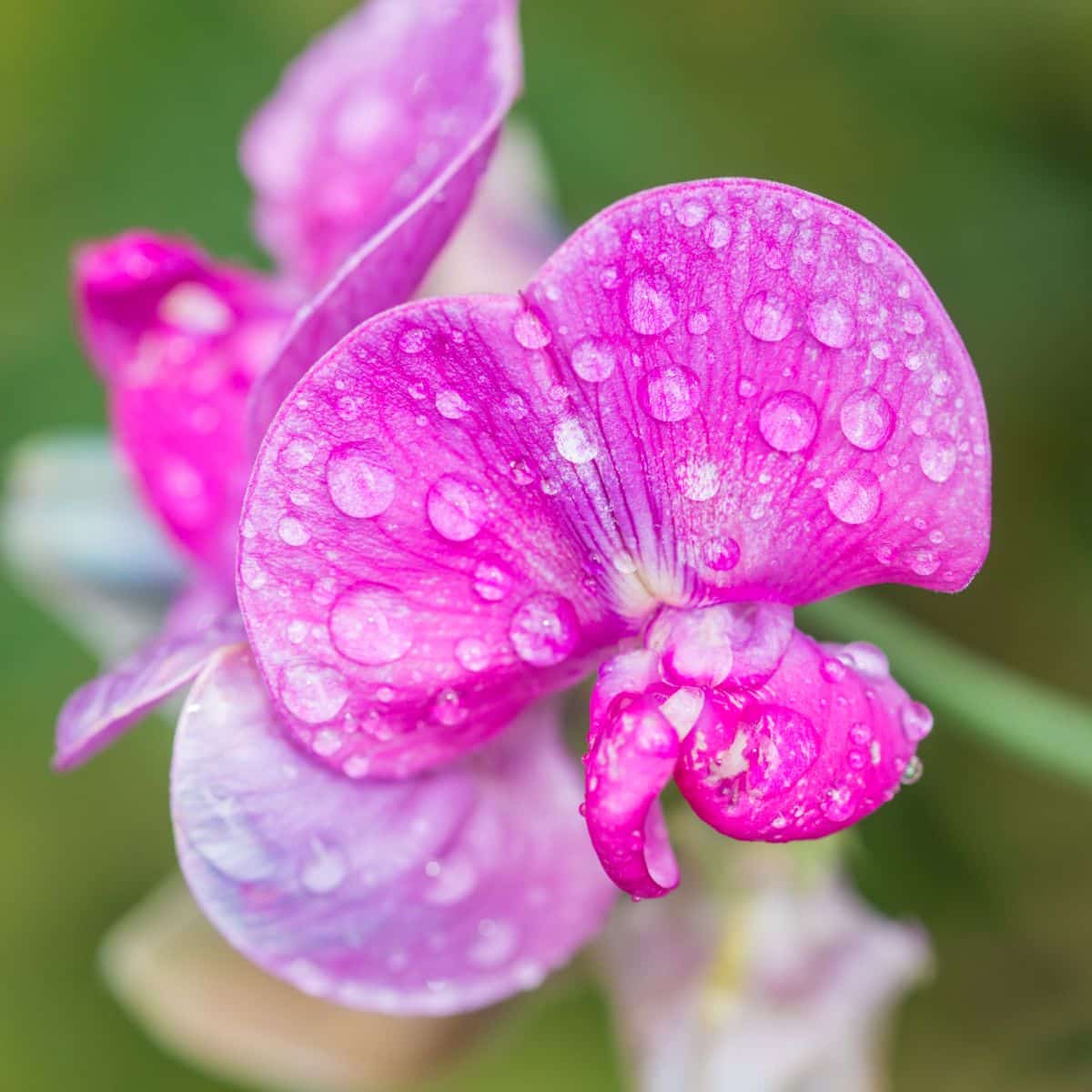
Here is the basic info for growing perennial sweet peas:
| Zones: | 3-8 |
| Blooming season: | Spring through fall |
| Expected height: | Up to 12 feet |
| Soil: | Moist, well-draining soil |
| Sun: | Full sun or partial shade |
Where Do Sweet Peas Grow?
Both perennial and annual sweet peas are native to Europe. As they are popular as ornamental blooms, they are now cultivated all over the world.
Like perennial sweet peas, annual sweet peas do best in zones 3-8. That said, you do not have to worry as much about annual sweet peas since they die each year anyway. With perennial sweet peas, your climate zone is a more important consideration.
Why Grow Sweet Peas?
Here are a few reasons we recommend growing sweet peas in your garden:
• Sweet peas are affordable. Unlike a lot of perennials, they are usually planted from seed rather than from nursery plants. That means you can purchase many plants for a small amount of money just by picking up a seed packet. This is true even for the everlasting pea.
• If you want pollinators in your garden, planting sweet peas is one way to hang a welcome sign. Butterflies, hummingbirds, and bees will all be excited to flit around them. Brimstone butterflies will be especially exuberant.
• Sweet peas are extremely unfussy about soil conditions. Pretty much any type of soil will do.
• These plants are low maintenance. You will need to train and prune the perennial vines, but other than that, they do not need a whole lot of attention. This is in contrast to what you can expect with quite a few other climbers, which have a reputation for being fussy.
• If you want a plant that produces beautiful flowers without a cloying scent, you cannot do better than a perennial sweet pea vine. With little to no fragrance, these plants will not bother even the most sensitive nose.
• If, on the other hand, you do want fragrance, annual sweet peas will be your new best friend around the garden.
• You can purchase sweet peas in a wide range of colors, whether you are getting annual or perennial flowers.
• Some people feel that the appearance of these blooms is similar to orchids, so much, so that sweet peas are sometimes referred to as “garden orchids.” If you enjoy the look of orchids but do not want the maintenance, sweet peas can be a lovely alternative.
When Do Sweet Peas Bloom?
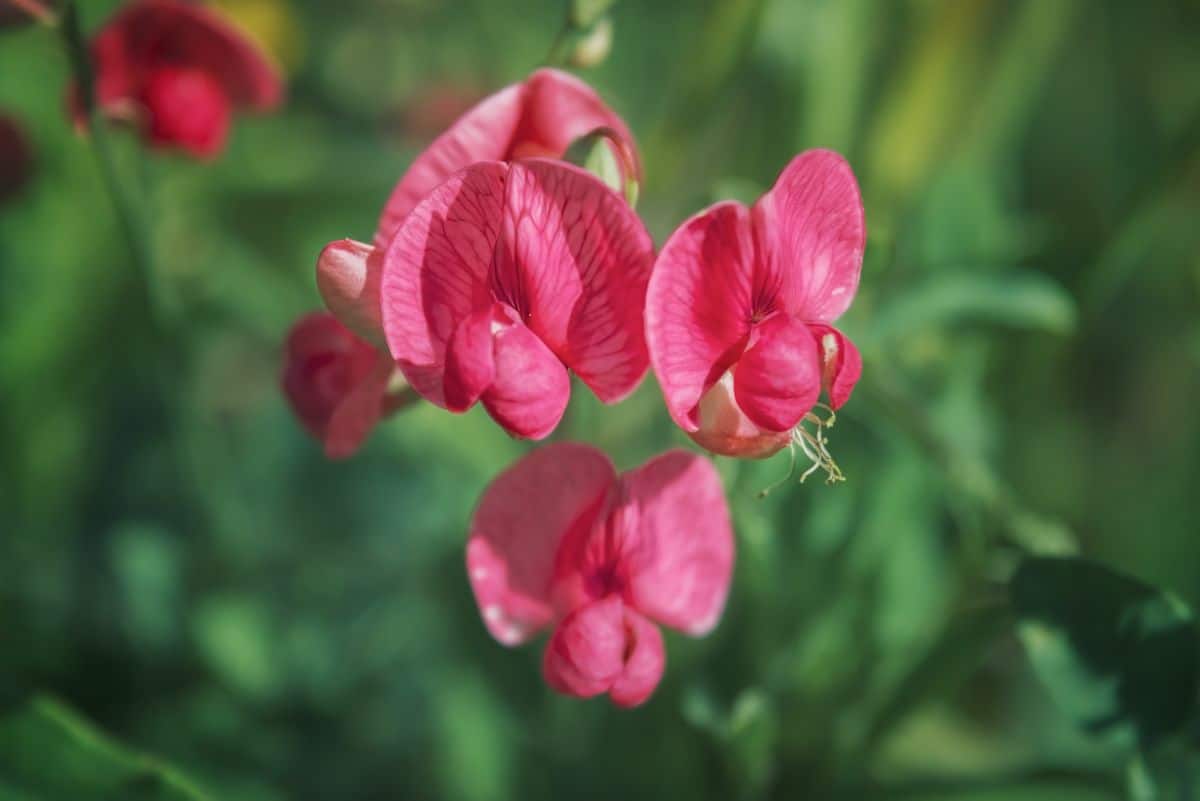
Perennial sweet peas may start blooming as early as late spring. Their main bloom period is summer, and their bloom time concludes in early fall.
How Long Do Sweet Peas Bloom?
Everlasting peas can bloom for months on end, rewarding you with a long-lasting spectacular display of beautiful flowers.
When to Plant Sweet Peas
If you are planting perennial sweet peas, you can do so in spring or fall.
If you are planting annual sweet peas, the best months for sowing are January through April or October through November. But you should wait until April to actually plant them outdoors.
Ideal Growing Conditions for Sweet Peas
If you want your sweet peas to flourish, producing an abundance of delicate flowers, then you will need to meet their sun, soil, and water requirements.
How Much Sun Do Sweet Peas Need?

A sunny position is most suitable for everlasting sweet peas. But sweet pea vines can benefit from a little bit of shade in the intense summer heat of certain climates. So, some light-dappled shade may be beneficial, depending on where you live.
This applies to annual sweet peas as well. They generally want full sun, but if it is really hot where you live, consider giving them some light afternoon shade.
What Type of Soil is Right for Sweet Peas?
Whether we are talking about perennial or annual sweet peas, there really is no “wrong” soil type. So long as you have rich, well-drained soil, sweet peas will thrive. Clay, loam, and sandy soils are all okay.
In terms of richness, you may want to amend your soil with compost before you plant sweet peas. This will also improve drainage.
One thing to note is that soil temperatures matter for these plants. They want cool soil, even though they also crave sunlight. For that reason, having some low-growing plants around them can sometimes be helpful since those will shade the soil without shading the sweet peas themselves.
It can be good for your soil to be slightly alkaline, but sweet peas will do just fine in slightly acidic or neutral soil too.
How Much Water Do Sweet Peas Need?
Your sweet peas need water about once a week, like most of the plants in your garden. But if the weather gets really dry, they may need water more frequently. In fact, if you are keeping them in containers, daily watering might be necessary during dry spells. Water deeply during these times.
How to Plant Sweet Peas
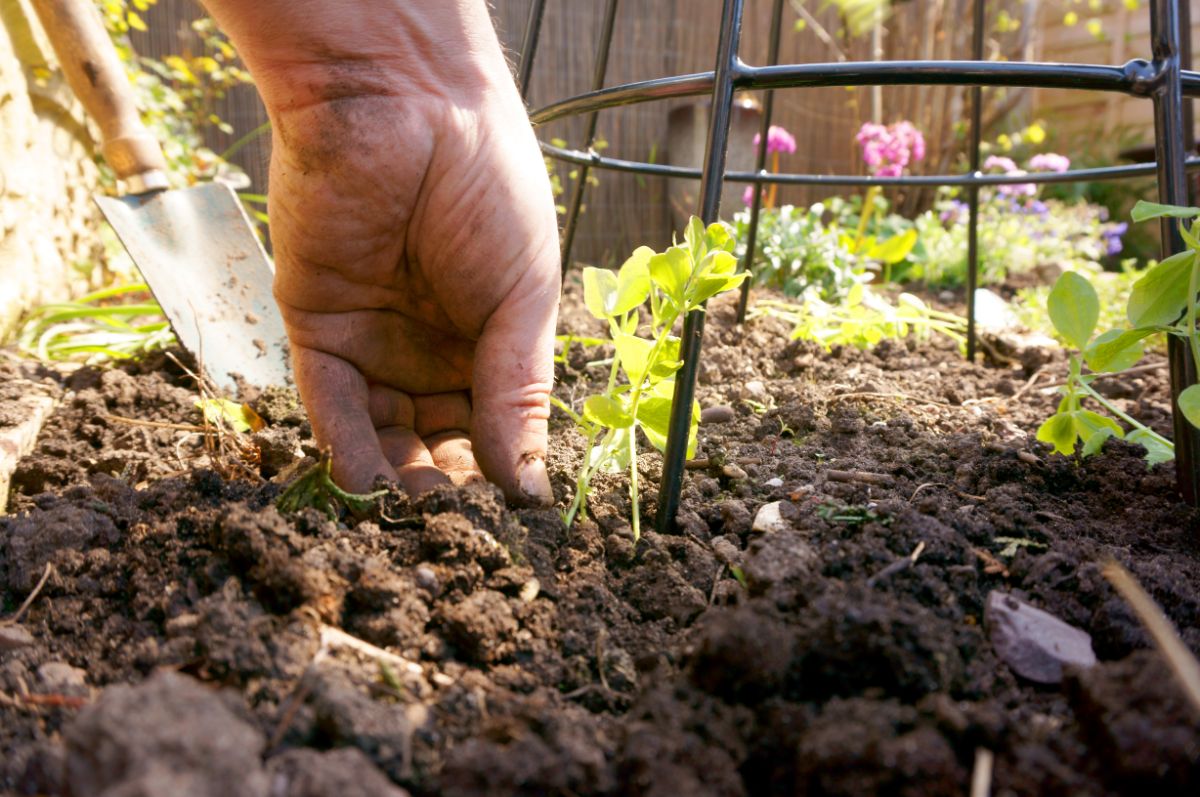
When planting the majority of perennials, you start out with a nursery plant or a bulb. You can grow them from seeds, but the process is usually slow, so most gardeners use seeds only for propagation, not for getting started.
Sweet peas, however, are different. Both annual and perennial peas are usually grown from seeds, not from starter plants.
Seeds are also the main method used for propagation, so see the section below on How to Propagate Sweet Peas for full instructions.
Most people plant sweet peas directly in their garden beds. That said, there is no reason you shouldn’t be able to grow them in containers.
If you do grow them in containers, take note of the following:
• Select a container for your sweet pea plant that is deep enough to accommodate the plant’s roots. Add drainage holes if the pot does not have them already.
• Find a spot for the pot where your everlasting pea can get plenty of sunlight.
• Sweet peas in containers can dry out more rapidly than those in your garden bed during drought conditions. Make sure to give them the extra water they need.
How to Propagate Sweet Peas
The main method for sweet pea propagation is using seeds. That is true whether you want to propagate annual sweet peas or perennial ones.
Below, we offer instructions for propagating sweet peas from seed, but we will also briefly discuss other methods.
Starting Sweet Peas from Seed
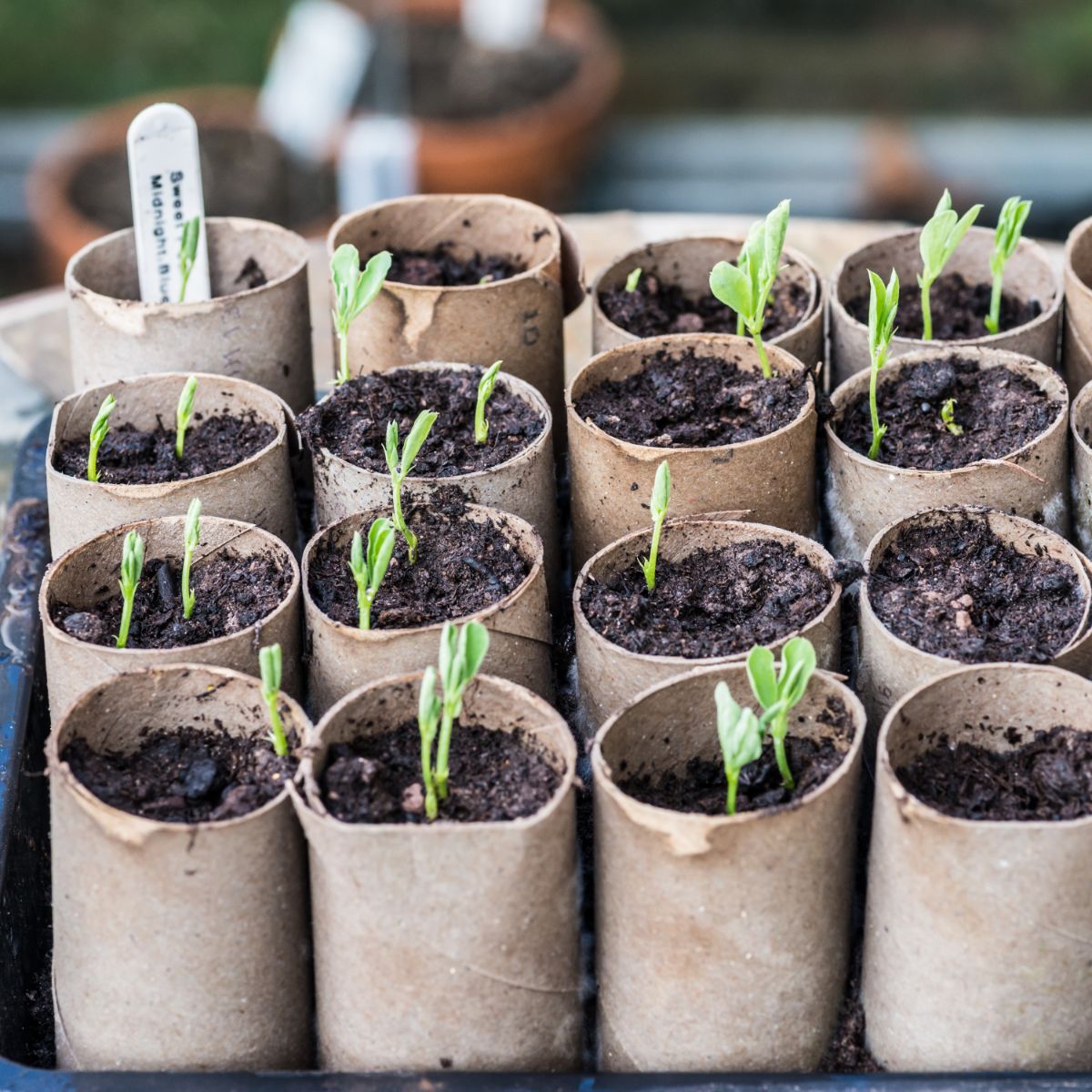
Here is how you can grow everlasting sweet peas from seeds:
1. In February or March, get some small containers with drainage holes and fill them with compost. Note that they should not contain any peat.
2. Use a spray bottle to moisten the compost.
3. Sow the everlasting pea seeds in the containers.
4. Cover the seed trays with clear plastic to contain the moisture. Then, place them in a warm location.
5. For the next ten days, keep an eye on the seed containers. Check if they are drying out, and use the spray bottle to get the compost moist again if they are.
6. After the ten-day period is over, the seedlings should sprout. If they still have not sprouted, give them a little longer. Then, take the cover off the tray.
7. Continue to monitor and water your sweet peas as they keep growing.
8. After your seedlings have grown for a while, they will be large and strong enough to transplant outdoors. Harden them first, so they get a chance to adjust.
Space apart plants 8 inches to 1 foot.
9. Water well after planting.
Alternatively, it is possible to sow sweet pea seeds directly in the ground (annual or perennials).
Starting Sweet Peas from Cuttings
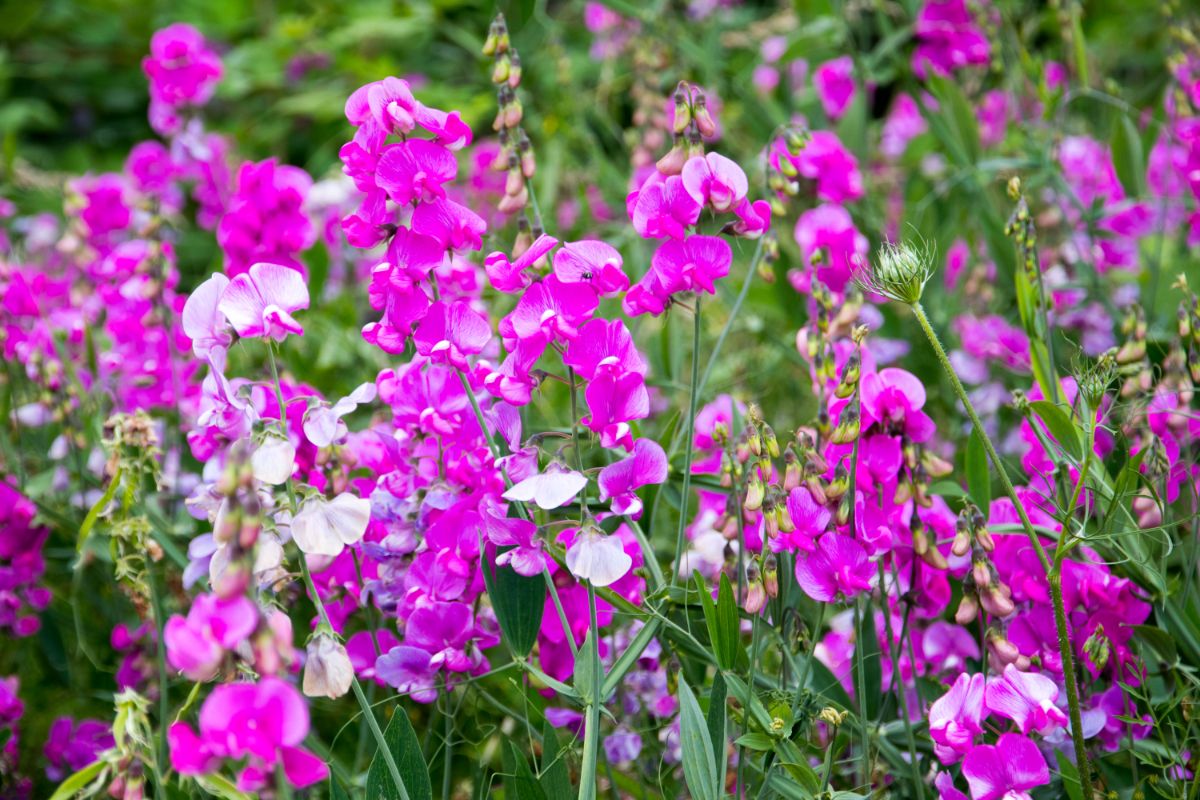
It seems intuitive that you should be able to propagate sweet peas from cuttings, but can you?
We searched around on this topic but were unable to find a clear answer for perennial sweet peas, and we have not attempted it ourselves.
You can certainly give it a try; the worst thing that can happen is it does not work. Just follow the standard instructions you would when starting most perennials from cuttings.
How to Divide Sweet Peas
Yes, it is possible to divide perennial sweet peas. You can do this in spring or fall. It is best to wait until the plant is done flowering.
We did not locate any instructions specifically for dividing everlasting peas, but you can likely succeed by following the general directions for dividing perennials.
1. Use a shove to dig in a circle around the everlasting pea. Make sure you do not cut through the roots.
2. After you have completed the circle, you can push the shovel under the roots to remove the plant from the soil.
3. Now, you can wipe the extra dirt away.
4. Once you can clearly see what you are doing, you can make your divisions.
5. Dig holes for the new divisions, transplant them, and water well.
How to Care for Sweet Peas
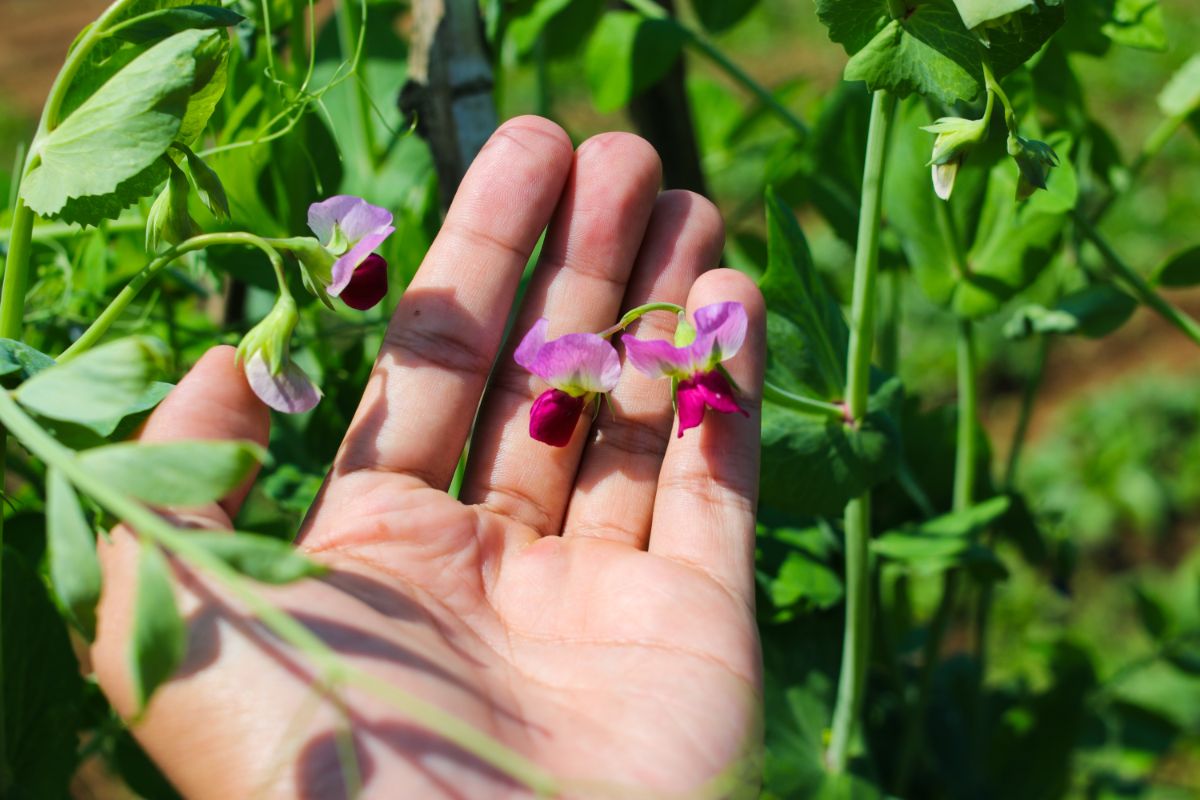
You know how to plant and propagate sweet peas, but how do you maintain them? Let’s go over what you should know about fertilizing, mulching, and more.
How to Fertilize Sweet Peas
It is a good idea to fertilize sweet peas when you plant them. Any general-purpose fertilizer will do nicely.
That said, sweet peas are not too hungry for fertilizer. If you prepared your soil with compost, that is typically enough all on its own. Over-fertilizing everlasting peas is not helpful.
How to Mulch Sweet Peas
Based on our research, most people do not mulch around sweet peas. These plants seem to do fine without it.
If you are having problems with weeds around your sweet peas, however, or the soil is drying out too easily, a thin layer of mulch might be helpful. Mulch might also help to keep the roots cool in hot conditions. Otherwise, just leave them alone.
How to Stake Sweet Peas
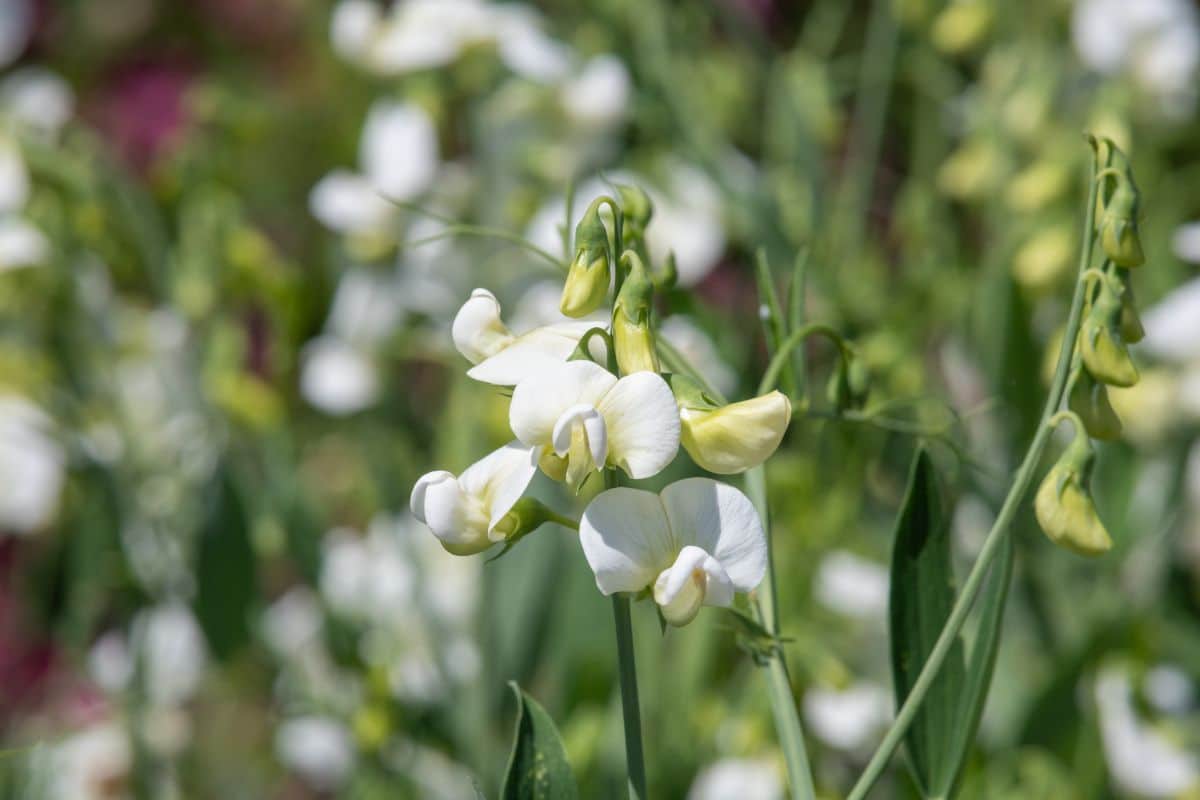
Because sweet peas are climbing plants, they need a trellis unless it is your plan to grow them as a ground cover.
We recommend that you push your trellis into the ground and then sow your seeds (or transplant your seedlings).
As your sweet peas grow, you will find that they naturally seek out the trellis and grow around it. You can, of course, gently push them the way you want them to grow. Tie them to the trellis directly here and there to provide them with additional support if they are not clinging to it adequately on their own.
How to Prune Sweet Peas
Pruning sweet peas is some of the only maintenance you really need to worry about once you have them established. They do need regular deadheading, as well as pinching out. At the season’s end, you will cut them back. Let’s go over the details.
How to Deadhead Sweet Peas
You should remove the wilted blooms from your perennial sweet peas so that they produce new blooms. The more diligent you are about doing this, the more flowers you will get to enjoy before the season is at its end.
As important as this is with the perennial types of sweet peas, it is even more vital if you are growing annual sweet peas.
The Royal Horticultural Society also advises pinching out shoots. RHS writes, “When the seedlings are 7.5-10cm (3-4in), use your thumb and finger to pinch out (remove) the top of the shoot just above a healthy leaf. This will encourage side shoots - these will always be stronger than the central stem you have pinched out.”
When to Cut Back Sweet Peas
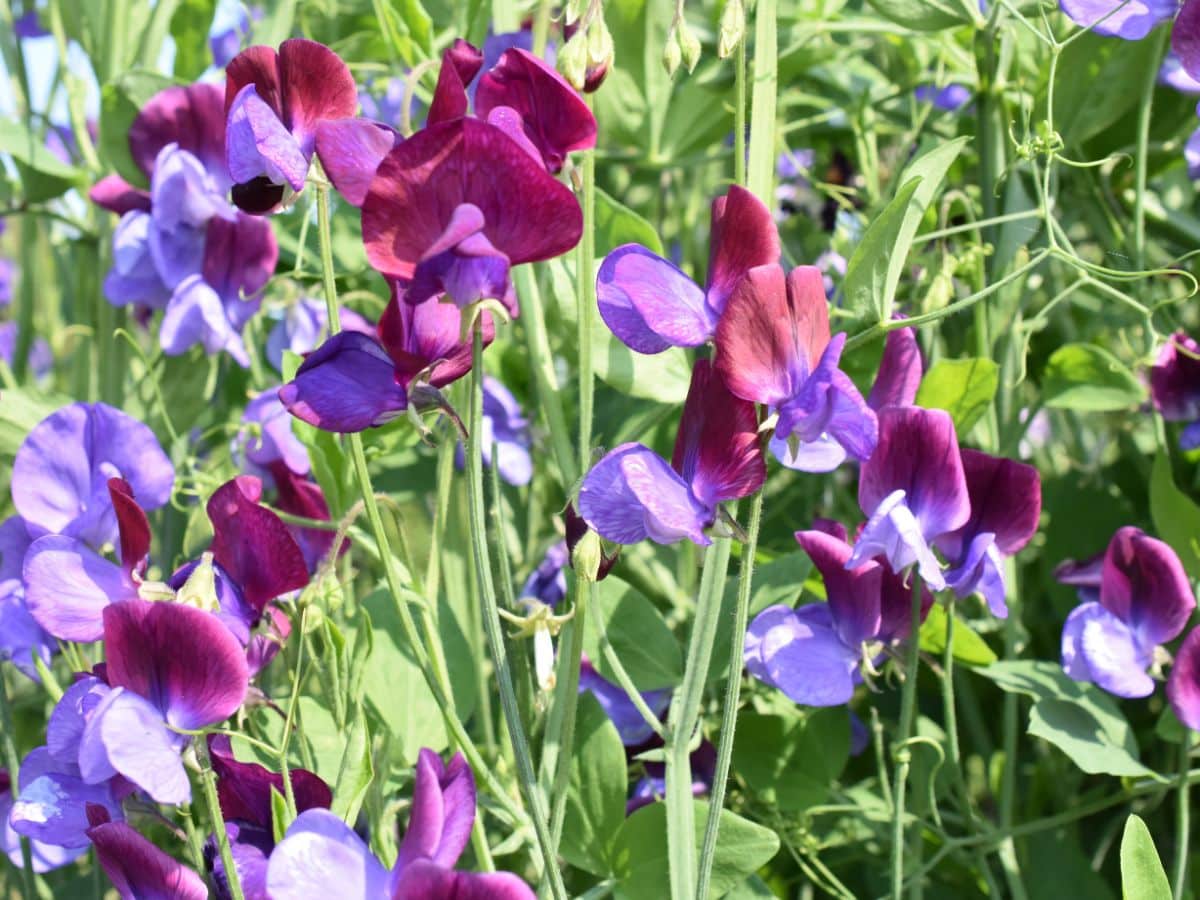
You do not have to trim back annual sweet peas since they are done after the season is over. But perennial sweet peas do need trimming back.
When should you do this? You can do it in fall at the same time as many of your other perennials. But we have also seen some gardeners say that they wait until winter or even early spring to trim their sweet peas. So, that is also an option.
How far should you trim the sweet peas? Go all the way down to almost the ground.
Are Sweet Peas Vulnerable to Diseases or Pests?
Some diseases that sweet peas can come down with include rust, powdery mildew, black root rot, and leaf spot.
Pests that can affect sweet peas include aphids, mites, pea moths, slugs, and snails.
As far as deer and rabbits are concerned, we have seen mixed answers. It seems that sweet peas are more deer- and rabbit-resistant than some other plants but may still be targeted if they are hungry enough.
Recommended Planting Combinations for Sweet Pea
• Other sweet peas: If you are planting perennial everlasting sweet peas, you can always choose annual sweet peas as companions.
• Roses: Like everlasting sweet peas, roses appreciate lots of sun. They also have a “classic” look to them, which sweet peas do as well. So, aesthetically, they can accompany one another nicely, weaving a beautiful harmony.
• Lavender: This is a popular choice for planting with annual sweet peas. It may also work well around your perennial sweet peas.
In general, any low-growing plants that love full sun and well-draining soil will also make great companions for your sweet peas.
Sweet Pea Landscaping Ideas

There are so many different ways you can beautify your landscaping using sweet peas. Here are some ideas to think about:
• Grow them on a fence: If you have an unattractive fence, you can cover it in sweet peas to make it more pleasing to the eye.
• Dramatic entry: Sweet peas can twine around an arbor, which you can place at the entrance to your garden or to a particular part of it (the pollinator garden, for example).
• Grow on a trellis: You can prop up a trellis along a wall and grow sweet peas up it, or you can just plant them on freestanding trellises anywhere in your garden.
• Sweet peas as ground cover: For a completely different effect, try growing sweet peas along the ground. This is a fast and easy way to cover a bare patch, or you can use it as an alternative to grass.
Recommended Sweet Pea Varieties
Here are some popular varieties of everlasting perennial sweet peas you can plant:
• Lord Anson’s Blue Pea: These sweet peas are named for their light purplish blue flower color. But what makes them really special is that, unlike most perennial sweet peas, they actually have a fragrance. Their scent is similar to that of annual sweet peas. So, this is a “best of both worlds” variety.
• White Pearl: As the name suggests, this type of sweet pea produces white blooms.
• Albus: While we were unable to find a picture of this type of sweet pea, the name tells us that it is another option for white flowers.
• Pink Pearl: These blooms have a particularly delicate look about them with hues of white and pale pink.
• Blushing Bride: As far as we can tell, this may either refer to sweet peas in pale pink and white or to a mix of sweet peas in pale pastel hues, including pink, peach, yellow, and blue.
Shop online to find these and other popular perennial sweet pea cultivars.
Frequently Asked Questions About Growing Sweet Peas
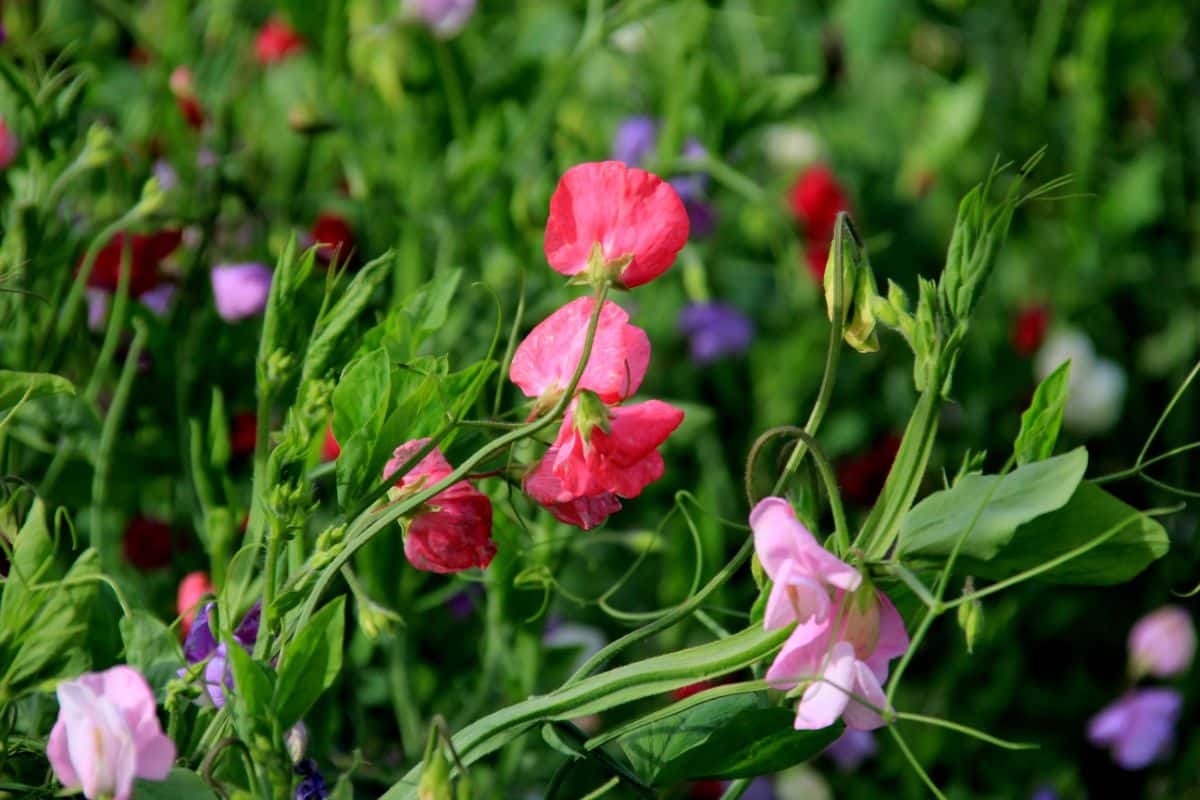
Here are answers to some frequently asked questions about sweet peas.
Insects, slugs, and snails are most likely to eat sweet peas, but mammals might, too, on occasion.
That depends on what type of sweet peas we are talking about. There is a type of sweet pea that is a vegetable, but that is not what this article is focusing on. In this post, we are talking about the flowers called sweet peas, which are not vegetables. The flowering plants in question are members of the genus Lathyrus.
“Sweet peas” when referring to a vegetable usually refers either to snow peas or snap peas. Snap peas and snow peas are both Pisum sativum. As you can see, that is an entirely different genus.
While the flowers called sweet peas might sound delicious, they are not. In fact, they are toxic. We will get into that more later in the FAQs.
Sweet peas’ leaves may burn when they are exposed to extreme temperatures or drought conditions.
The Royal Horticultural Society says, “Protect young plants if a significant temperature drop is a forecast, and always harden off indoor raised plants before planting out. There's not much you can do in hot weather (over 30°C), other than keeping plants well watered, but flowering usually improves again after the hot spell. Water during dry weather and avoid getting the foliage and blossom wet.”
Yes, both everlasting and annual sweet peas are toxic to humans. The seeds are particularly dangerous.
As explained here, “Accidental ingestion does not result in poisoning. However, eating large quantities of seed for weeks to months can result in paralytic syndrome. Symptoms can include paralysis, slow and weak pulse, breathing difficulty, and convulsions.”
Yes, sweet peas are poisonous to dogs, cats, and horses. If your pet eats sweet peas, they could come down with symptoms like lethargy, weakness, head pressing, tremors, pacing, and seizures. Sweet peas are toxic enough to be lethal for animals. So, make sure you keep your pet away from them.
Yes, for the most part, sweet peas are easy-grow, low-maintenance plants that even novices can grow successfully. This is true of both perennial and annual sweet peas.
Where to Buy Sweet Peas
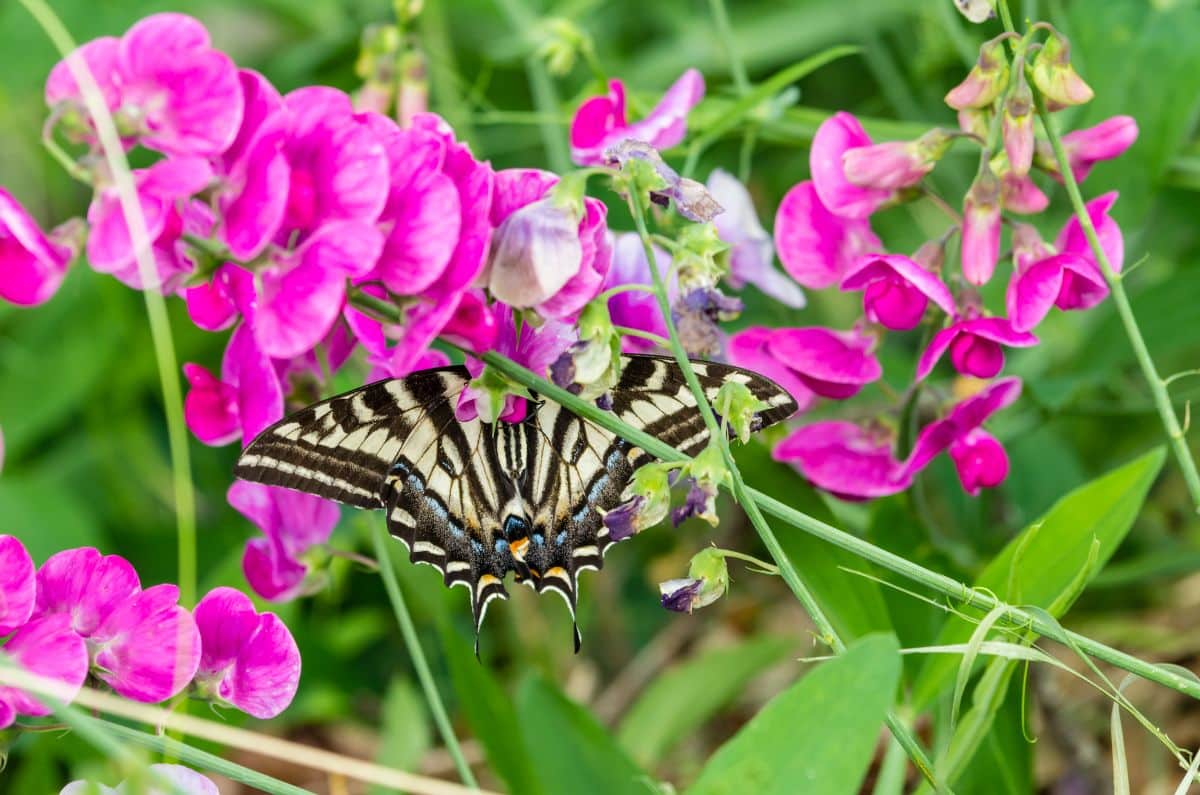
Are you ready to plant perennial or annual sweet peas in your garden, or perhaps a combination of both? Shop online to access the largest selection of sweet pea varieties.

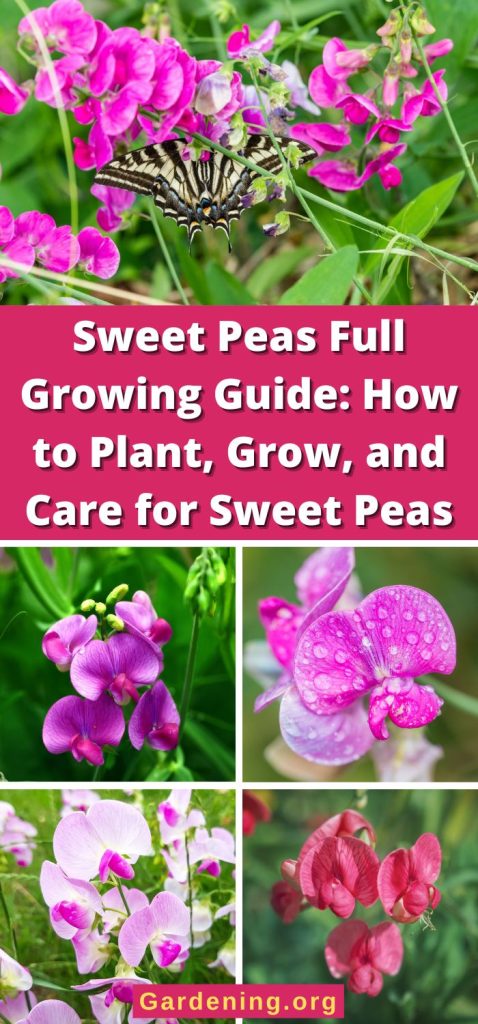
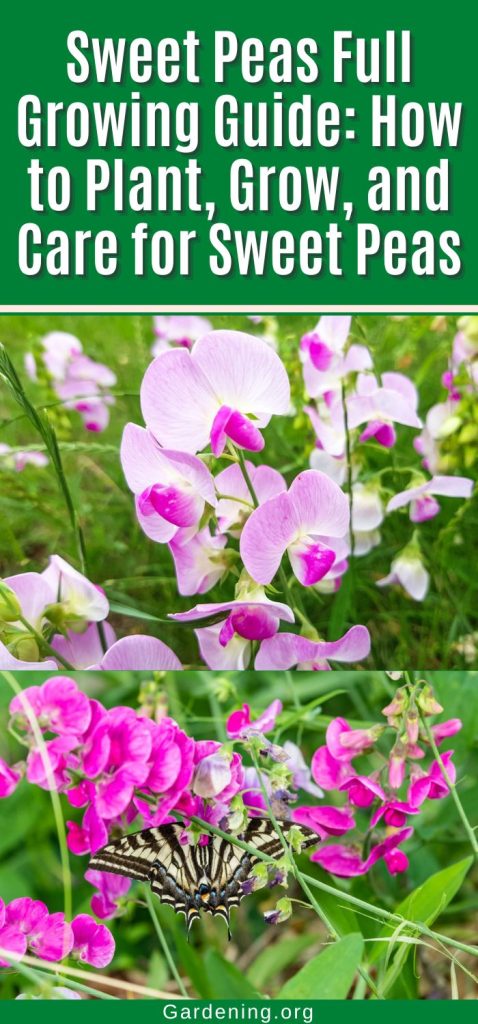
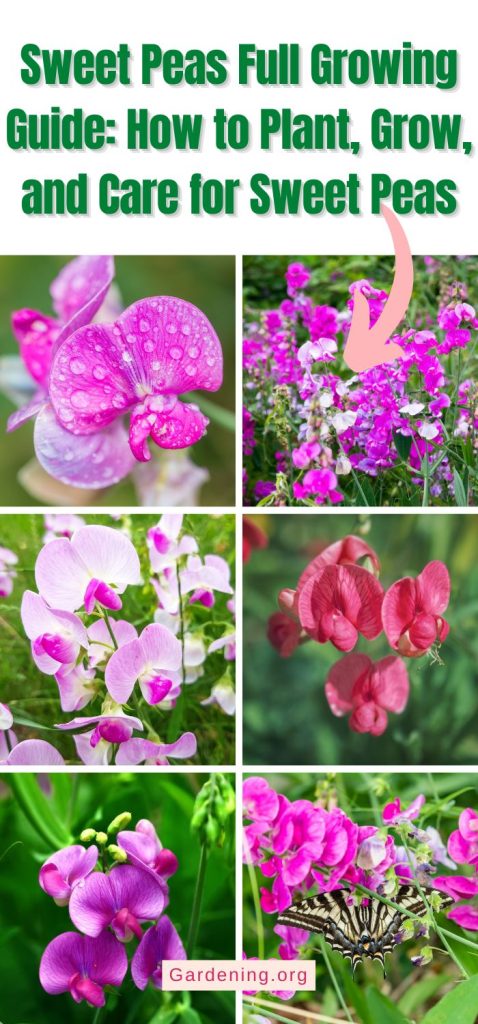
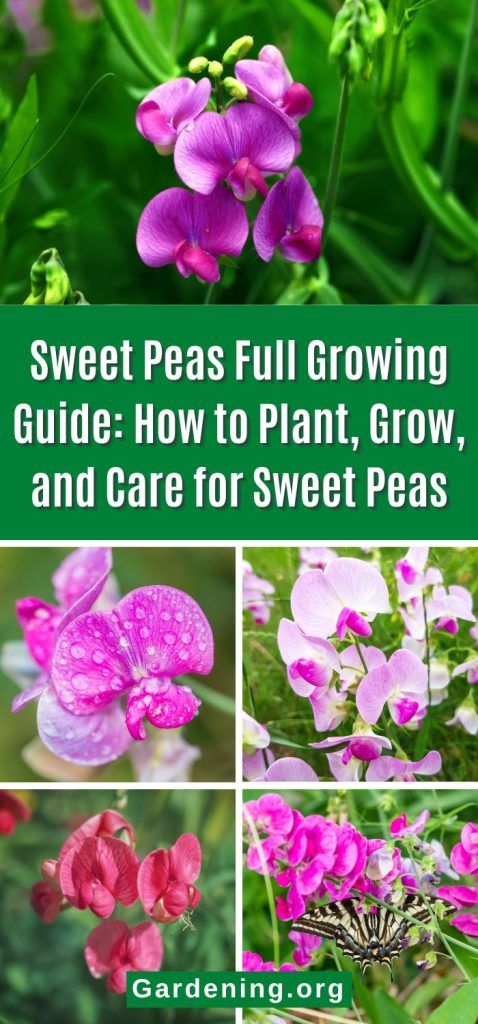

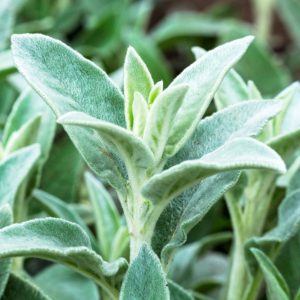

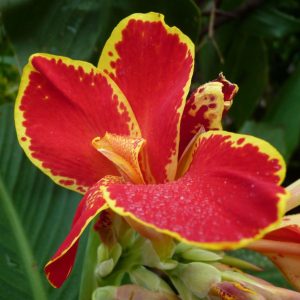
Arun Mahajan
Exaustive information and thorough instructions for propagation. Highly appreciated.